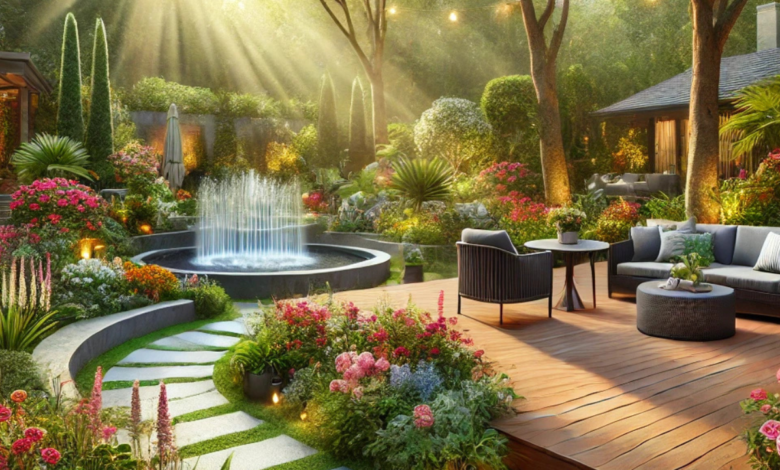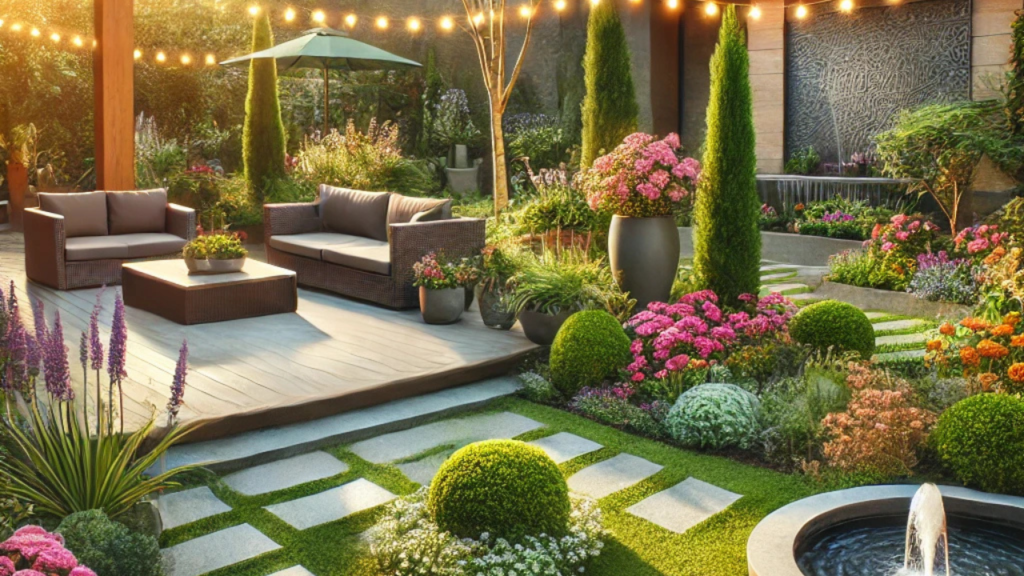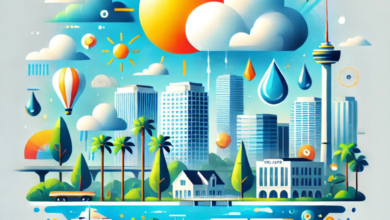Transform Your Outdoors: Creative Landscaping Ideas for Every Space

Landscaping is much more than just planting trees and flowers—it’s about creating a harmonious outdoor space that enhances the beauty of your property, adds functionality, and even contributes positively to the environment. Whether you have a sprawling backyard or a compact urban patio, innovative landscaping can transform your space into an oasis of beauty and relaxation. This article uses creative landscaping ideas, from planning and hardscaping to softscaping and accessorizing, to help you create a stunning outdoor area.
Planning Your Landscape Design
Assessing Your Space
The first step to any successful landscaping project is understanding your space. Whether you have a small backyard or an expansive garden, evaluate its size, shape, and natural features. Identify focal points like a majestic tree or a scenic view, and decide how you want to use the area—do you envision a cozy gathering space, a tranquil garden, or a child-friendly play zone? Sketch out your ideas to visualize the possibilities.
Setting a Budget
Landscaping can be tailored to any budget. Start by listing essential features, such as pathways, seating, or a garden bed, and then add optional elements like water features or lighting. DIY options can save costs, but hiring professionals for complex tasks may be worth the investment. Prioritize features that will offer long-term value and enjoyment.
Understanding Your Climate and Soil
Your region’s soil type significantly influences plant selection. Native plants are an excellent choice as they thrive in local conditions and require less maintenance. Conduct a soil test to determine its pH and nutrient levels and amend it to support healthy growth.
Choosing a Style
Landscaping styles range from modern minimalist to lush tropical or rustic charm. When choosing a design theme, consider your home’s security to create a cohesive look. For instance, sleek hardscaping and geometric patterns complement contemporary homes, while colorful flowers and curved pathways enhance traditional settings.
Creative Hardscaping Ideas

Paths and Walkways
A well-designed path connects different parts of your garden and enhances its visual appeal. Choose gravel, brick, or natural stone to create pathways that reflect your style. Add solar-powered lights along the edges to make them functional and inviting after sunset.
Patios and Decks
Patios and decks provide the perfect setting for outdoor living. Multi-level decks add dimension to your yard and can include built-in seating or planters. For added functionality, incorporate a fire pit or an outdoor kitchen. Choose weather-resistant materials like treated wood or composite decking for longevity.
Water Features
The soothing sound of water can elevate any landscape. A simple fountain, a koi pond, or a cascading waterfall can become the centerpiece of your outdoor space. Opt for energy-efficient pumps and consider incorporating aquatic plants to keep maintenance minimal and eco-friendly.
Retaining Walls and Edging
The retaining walls are both decorative and functional. They help manage slopes, prevent soil erosion, and create visual interest. Materials like stone, wood, or metal can match various design styles, while curved edges and vibrant edging plants soften the look.
Innovative Softscaping Techniques
Garden Zones
Divide your garden into zones to maximize functionality. Dedicate areas for flowers, vegetables, and herbs to create a vibrant and productive space. Seasonal planting ensures that your garden stays colorful throughout the year.
Creating Layers and Textures
Layering plants of different heights and textures adds depth and visual interest. To create dynamic compositions, combine tall ornamental grasses with low-growing ground covers and colorful perennials. Use contrasting colors to make your garden pop, or opt for a monochromatic scheme for a soothing effect.
Sustainable Landscaping
Sustainability is a growing trend in landscaping. Native plants, xeriscaping (low-water landscaping), and composting reduce water and fertilizer needs while benefiting the environment. Use mulch to retain soil moisture and suppress weeds, and consider installing a rain barrel for irrigation.
Vertical Gardens
Vertical gardens are a space-saving solution for small yards or urban patios. Use wall-mounted planters, trellises, or hanging pots to grow flowers, herbs, or vegetables. Green walls can also improve air quality and add a modern touch to your landscape.
Enhancing with Lighting and Accessories
Outdoor Lighting
Strategic lighting can transform your landscape after dark. Path lights ensure safety, while string lights add a whimsical charm. Spotlights can highlight trees, sculptures, or water features. Solar-powered and energy-efficient LED options are cost-effective and eco-friendly.
Furniture and Decor
Choose comfortable, durable, and weather-resistant outdoor furniture. Complement your seating area with decorative elements like birdbaths, sculptures, or wind chimes. Incorporate colorful cushions and rugs to add warmth and personality.
Smart Landscaping
Modern landscaping embraces technology. Automated irrigation systems ensure your plants get the right amount of water, while innovative lighting systems allow you to control ambiance and security from your smartphone. These additions save time and enhance convenience.
DIY vs. Hiring Professionals
Pros and Cons of DIY Landscaping
DIY landscaping can be a rewarding experience that saves money and allows for personal creativity. However, it requires time, effort, and a basic understanding of design principles and plant care. Large projects or those requiring permits may be better left to professionals.
When to Hire a Professional
Complex designs, like multi-tiered gardens or elaborate water features, often benefit from professional expertise. Landscapers can also ensure compliance with local regulations and handle specialized tasks like tree removal or drainage systems.
Tips for Working with Landscapers
When hiring a landscaper, clearly communicate your vision, budget, and timeline. Provide visual references and discuss maintenance expectations to ensure a successful partnership.
Conclusion
Landscaping is an art and science that transforms outdoor spaces into functional, beautiful, and sustainable environments. The possibilities are endless, from detailed planning and innovative hardscaping to lush softscaping and creative accessories. With careful thought and creativity, you can design a landscape that reflects your style and enhances your outdoor living experience. Start today and let your imagination bring your dream landscape to life!
FAQs
What is the best way to start planning a landscape?
Begin by assessing your space, setting a budget, and identifying your goals. Sketch ideas and research plants and materials suited to your climate and style.
How do I make my landscaping sustainable?
Use native plants, install a rain barrel for irrigation, practice xeriscaping, and add compost to improve soil health.
What are some easy DIY landscaping ideas?
Create a pathway with gravel or pavers, plant a flower bed, or add string lights and potted plants to enhance your outdoor space.
What type of plants should I choose for a small yard?
Opt for vertical gardens, dwarf varieties, or container plants to save space and add greenery.
How much does professional landscaping typically cost?
Costs vary based on project size and complexity, but small projects can range from $1,000 to $5,000, while larger designs may exceed $20,000.
You May Also Read: https://bestusatime.com/thejavasea-me-leaks-aio-tlp287/



